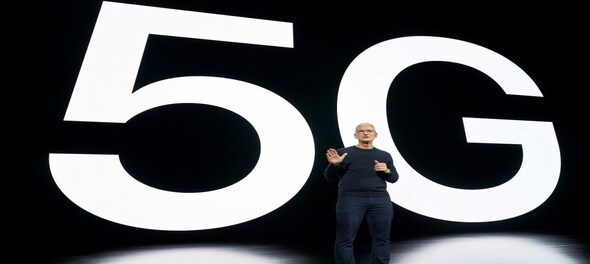
On Tuesday, the internet was awash with reports from news outlets and wire agencies that the Indian government convened a meeting on October 12 with telecom service providers and smartphone manufacturers such as Apple, Samsung, et al, "to prioritise rolling out software upgrades to support 5G in the country, amid concerns that many of their models are not ready for the recently launched high-speed service."
Reuters, quoting industry sources and Airtel's website, reported on October 11 that "Apple's iPhone models, including the latest iPhone 14, and many of Samsung's premier phones do not have software compatible for supporting 5G in India." The report adds that "more than three dozen models of China's Xiaomi and Vivo were shown as ready for use with (Airtel's) 5G service."
Paytm Founder and CEO Vijay Shekhar Sharma tagged Airtel in a tweet to say he bought a Google Pixel 6a phone only to use 5G, but it was not showing the network as an option in New Delhi. Later, he asked Google for a software upgrade in a tweet.
Another prominent business news outlet, quoting an unnamed source, reported that the matter was escalated to the highest levels in both Apple and Airtel on supposed lack of 5G support on iPhones, and that a meeting will be held between senior executives from both companies to work out a rollout timeline.
All of this implies to the uninformed reader that enabling 5G support is as simple as pushing out an iOS or Android update.
It is not.
Here's why these reports are misleading — cellular frequency bands are a hardware implementation, and not software. Supported bands are physically installed on a smartphone during assembly/manufacturing, and cannot simply be added through a software update.
According to an industry expert, the only way a software update will give you access to 5G on your smartphone is if the device already supports the band, and the update merely unlocks it.
As Apple explains on its support page, all you need for 5G is an iPhone 12 or later, a carrier that offers 5G service, and a subscription to said 5G plan. That's it. Further, the iPhone gives you three options in the mobile network settings:
The government's agenda for the October 12 meeting is merely to streamline the process of rolling out 5G, and not, as is being erroneously reported, to push smartphone manufacturers to achieve the impossible.
Let's talk numbers
Airtel, in the recent 5G spectrum auction, bought the 900 MHz (n8), 1800 MHz (n3), 2100MHz (n1), 3300 MHz (n78), and 26 GHz (n258 mmWave) bands. Jio Infocomm, on its official website, says 5G services will be available in the n28 (700 Mhz), n78, n258 bands. Vi bought two — n78 and n258.
In India, Apple's latest smartphone lineup — the iPhone 14 series — supports 22 5G bands; pertinently, they support the n1, n3, n8, n28, and n78 bands. Samsung, on all its 5G smartphones, supports 12 bands, including n1, n3, n8, n28, and n78.
What does this mean?
This means that, barring n258, the most popular smartphones in India will support the majority of 5G bands on offer, across telcos. And it is near impossible for companies that have established lines of manufacturing to change the processes midway through a smartphone generation to add a frequency band. The n258 band might be added in next year's line-up of 5G smartphones, but the models that have already been released will continue to support only the bands they were initially released with.
So, unlike what the aforementioned media reports suggest, if you have a 5G smartphone and you aren't able to access the service — once it's commercially available, of course — it is in all likelihood because the area you're in has a frequency that is not supported at a hardware level by your handset.
Here's why the lack of the n258 band does not matter
The n258 band is what's widely referred to as the millimetre-wave (mmWave) band. This is the band that offers the highest 5G speeds possible, but also offers the poorest coverage. Often, mmWave 5G reception is known to be disrupted by mere tree leaves in the way — essentially, unless you have a clear line of sight to an mmWave tower, you are unlikely to get the full benefit of the n258 band.
Also read: 5G Rollout: Where the world stands
And that's exactly why this brouhaha over "lack of support" is needlessly alarmist — the easiest, and very likely the most widely available "5G service" in the country will be powered by the 700/900 MHz frequencies, which are also incidentally where telcos made the most investment across all 22 circles the country. As we explained in this earlier piece, low-frequency bands offer a much wider coverage area — ideal for a country like India.
Besides, most industry experts point out that it will be years before regular users will be able to take full advantage of 5G as the technology needs to fully mature.
Before we get too worked up over streaming Netflix at 5G speeds, maybe we should first all chill.



